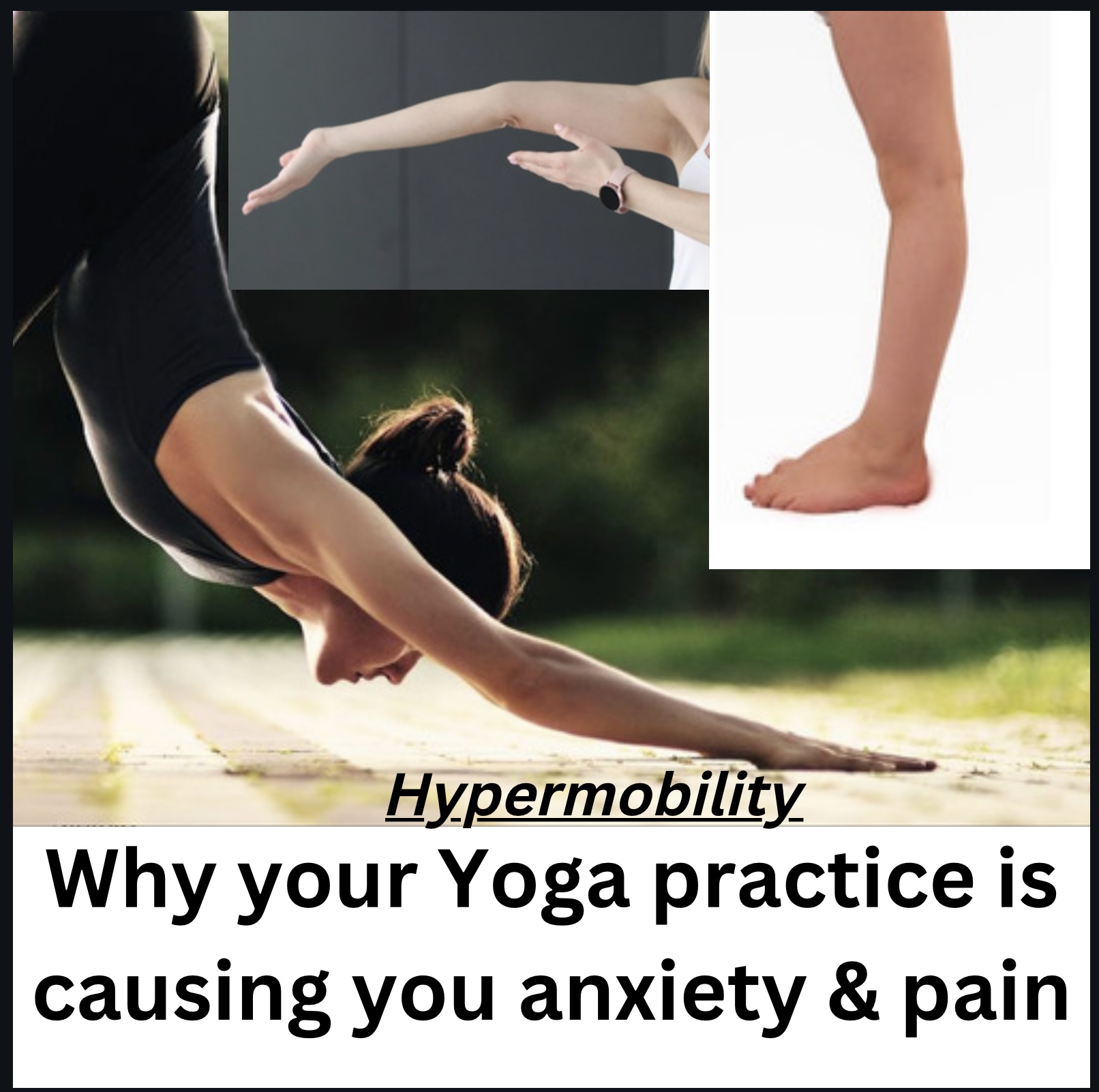 Hypermobility, hyperextension, hyperflexability – these are different words all describing the same thing – a weakness or laxness in the connective tissue (fascia) of the joints.
Hypermobility, hyperextension, hyperflexability – these are different words all describing the same thing – a weakness or laxness in the connective tissue (fascia) of the joints.There is a tight link between anxiety and generalized hyper joint mobility as well as preliminary connections with depression, fibromaglia, chronic fatigue, and attention deficit (and hyperactivity) disorder. There is also evidence that this laxness in the the fascia is also related to issues of low blood pressure and a resulting problems such as POTS.
It basically works like this:
A lack of strenth in the connective tissue (fascia) surrouding the joint makes the joint and the tissue more susceptible to injury, injury signals the release of cytokines and creates inflammation and increased levels of cortisol in the blood.
High levels of cortisol and generalizad inflammation is highly associated with all of the previously mentioned disorders as well as just more physical pain.
Besides increasing the chance the injury and inflammation, the lack of blood flow through the system (due to a lack of engaging muscle fiber and connective tissue) results in low blood pressure – or hypotension. Hypotension can result in dizzyness, blurred vision, tiredness and difficulty getting blood from the digestive tract up to the heart. This in turn will also affect the digestion, the immune system and increase the liklihood of other chronic ailments, such as long covid.
Things then only get worse for my fellow flexis since we are often drawn to activities where we can enjoy and showcase our great limberness and without proper joint stability, those hanumanasana splits without engaging the feet and leg muscles only makes things worse and increase our chances of inflammation and injury.
Some people think that super flexis got it easy on the Yoga mat. WRONG.
Those of us who are naturally flexible, or teachers who are guiding the practice of naturally flexible individuals, absolutely must pay even more attention to hand spine connection and foot pelvic alignment. Without engaging these connections which start in the karmendriyas (organs of action) of the hands and feet, the muscles around the bones and joints will not engage. Any lack of awareness to these foundational connections and active engagement, will increase the probability of hyperextension of the joint, injury and inflammation and all the benefits of Yoga Asana can easily transform from a discipline of holistic healing into one of chronic injury and poor system functioning.
So if you are a naturally flexible human being, be careful with your practice and make sure that you are working with a teacher who can help you to protect your joints and engage those deep muscle fibers around the bones as well as guide you into a progressive practice of inversions and back bends to get the blood moving from the feet up into the heart and brain.
SOURCES:
Arthralgias, fatigue, paresthesias and visceral pain: Can joint hypermobility solve the puzzle? A case report (2016)
Ehlers-Danlos Syndrome: Immunologic contrasts and connective tissue comparisons (2021)
Is pain the only symptom in patients with benign joint hypermobility syndrome? (2015)
Psychopathological manifestations of joint hypermobility and joint hypermobility syndrome/ Ehlers-Danlos syndrome, hypermobility type: The link between connective tissue and psychological distress revised (2015)
